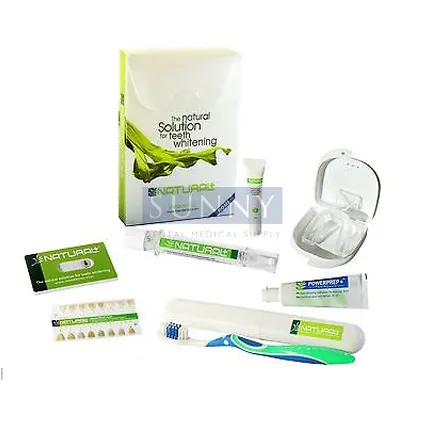Understanding Take Home Whitening Kits
Take-home whitening kits are a popular way to brighten your smile from the comfort of your own home. These kits, typically provided by your dentist, offer a convenient and often more affordable alternative to in-office whitening procedures. They generally consist of custom-fitted trays and a whitening agent, usually a peroxide-based gel, designed to be used for a specific duration each day. Understanding how these kits work, the science behind them, and their various components is crucial for achieving the best possible results. This guide will delve into the intricacies of take-home whitening kits, empowering you to make informed decisions about your teeth whitening journey and helping you get the brightest, healthiest smile possible. With the right approach, a take-home kit can significantly enhance your confidence and overall appearance.
How Do Take Home Whitening Kits Work
Take-home whitening kits leverage chemical processes to lighten the discoloration in your teeth. The active ingredient, typically hydrogen peroxide or carbamide peroxide, penetrates the enamel and dentin, breaking down the stain molecules. The custom-fitted trays ensure that the whitening agent is in close contact with the teeth, maximizing its effectiveness and minimizing contact with the gums. The process involves the oxidation of stain molecules, which effectively bleaches the teeth. Regular use, as directed by your dentist, is essential to achieve the desired results. It’s also important to understand that the effectiveness can vary depending on the type of stains, the concentration of the whitening agent, and the duration of treatment. Following the instructions precisely is key to safety and success. The whitening process itself may take a few weeks or even longer to see the complete effect.
The Science Behind Whitening

The science behind teeth whitening is rooted in the chemical reaction between the peroxide-based whitening agents and the organic molecules that cause staining. These molecules, which result from various foods, drinks, and lifestyle choices, are broken down through oxidation. This process is very similar to how many other cleaning processes work. As the oxidation occurs, these molecules become less concentrated, leading to a lightening of the teeth’s appearance. This reaction takes place within the enamel and dentin of the teeth, impacting the internal structure to produce the desired whitening effect. The concentration of the whitening agent and the duration of application influence the extent of this reaction. Moreover, factors like the inherent shade of your teeth and the type of staining can also influence the outcome of the whitening process. Consulting your dentist provides a complete understanding of your teeth’s structure and how it will react to treatment.
Types of Whitening Agents Used
The primary whitening agents used in take-home kits are hydrogen peroxide and carbamide peroxide. Hydrogen peroxide is a stronger bleaching agent and often provides faster results, whereas carbamide peroxide breaks down into hydrogen peroxide over time, offering a more sustained release. The concentration of these agents varies depending on the kit and the dentist’s recommendation, impacting the effectiveness and potential for sensitivity. Some kits may also contain desensitizing agents to minimize discomfort. The dentist will assess your teeth and lifestyle before prescribing a specific agent and concentration. It’s critical to understand the differences in the agents to make sure you are setting realistic goals for the whitening process. The right agent and concentration will help achieve a beautiful and healthy smile, while also promoting proper dental hygiene.
Top 5 Secrets for Effective Whitening with Kits
Achieving the best results with a take-home whitening kit involves more than just applying the gel. Several key factors contribute to maximizing effectiveness and ensuring a safe and pleasant experience. This section unveils the top 5 secrets that will help you unlock a brighter, more confident smile. These secrets encompass everything from selecting the appropriate kit to managing any sensitivity and maintaining your results for the long term. Keep in mind that consulting with your dentist is always recommended. This allows for a tailored treatment plan based on the specific needs of your teeth and lifestyle. Following these key secrets will ensure the best possible outcome for your teeth whitening journey.
Secret 1 Selecting the Right Kit
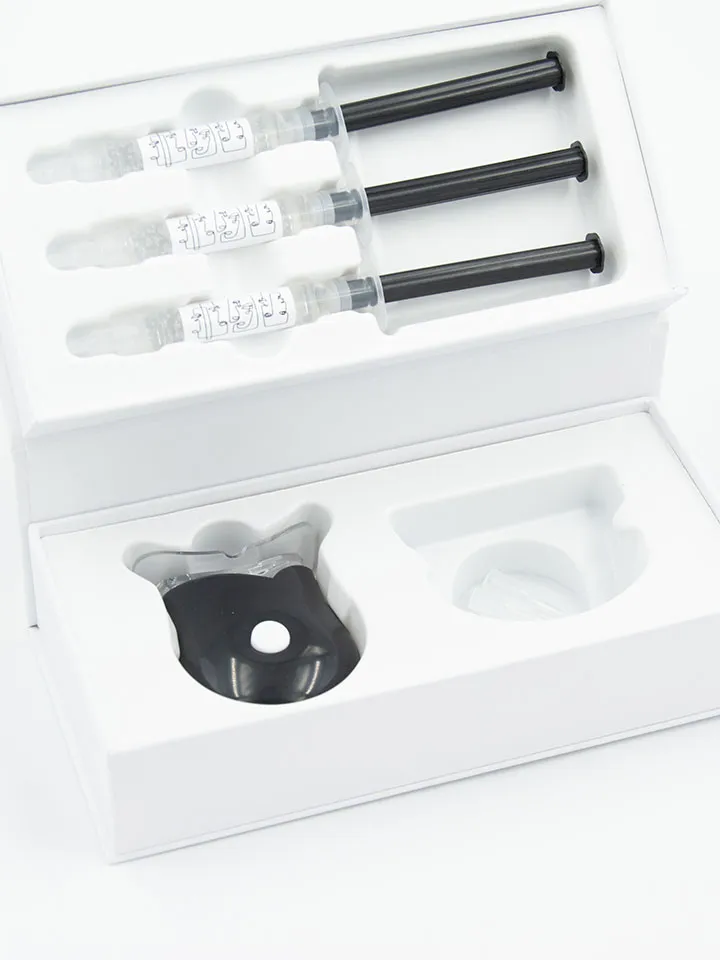
Choosing the right take-home whitening kit is the first and most crucial step. Your dentist will assess your oral health, including existing fillings, crowns, and the severity of any staining. This assessment helps determine the most suitable kit for your specific needs. Custom-fitted trays, created from impressions of your teeth, are a key component of effective kits, ensuring the whitening agent makes proper contact with your teeth. The concentration of the whitening agent, as discussed earlier, is another critical factor. Your dentist will recommend a concentration that is both effective and safe for your teeth. Consider your lifestyle habits, such as coffee or smoking, as these can impact the rate of staining. Selecting a kit in collaboration with your dentist maximizes the chances of achieving your desired results and minimizing potential side effects.
Secret 2 Proper Application Techniques
The effectiveness of a take-home whitening kit hinges on proper application techniques. Following your dentist’s instructions meticulously is paramount. This includes the correct amount of whitening gel to use in each tray and the duration for which you should wear the trays each day. Overfilling the trays can lead to the gel leaking and irritating your gums. Ensure the trays are properly seated and that there are no air pockets. Consistency is another key to success, so aim to use the kit every day as recommended, unless directed otherwise by your dentist. Regularly checking in with your dentist can help to gauge your progress and make any necessary adjustments to the application process. By following these tips, you can maximize the efficiency of your whitening kit and achieve the greatest results.
Secret 3 Managing Sensitivity
Tooth sensitivity is a common side effect of teeth whitening. Thankfully, there are several strategies to manage this. Using a toothpaste specifically designed for sensitive teeth, containing ingredients like potassium nitrate, can help reduce discomfort. Your dentist might also recommend a fluoride treatment to strengthen your enamel. Adjusting the application schedule, such as wearing the trays for a shorter duration or using the kit every other day, may also alleviate sensitivity. It’s also important to avoid extremely hot or cold foods and drinks during treatment, as these can exacerbate sensitivity. Communicating with your dentist about any discomfort is crucial; they can provide guidance and adjust your treatment plan accordingly. By proactively managing sensitivity, you can ensure a more comfortable and enjoyable whitening experience.
Secret 4 Maintaining Results
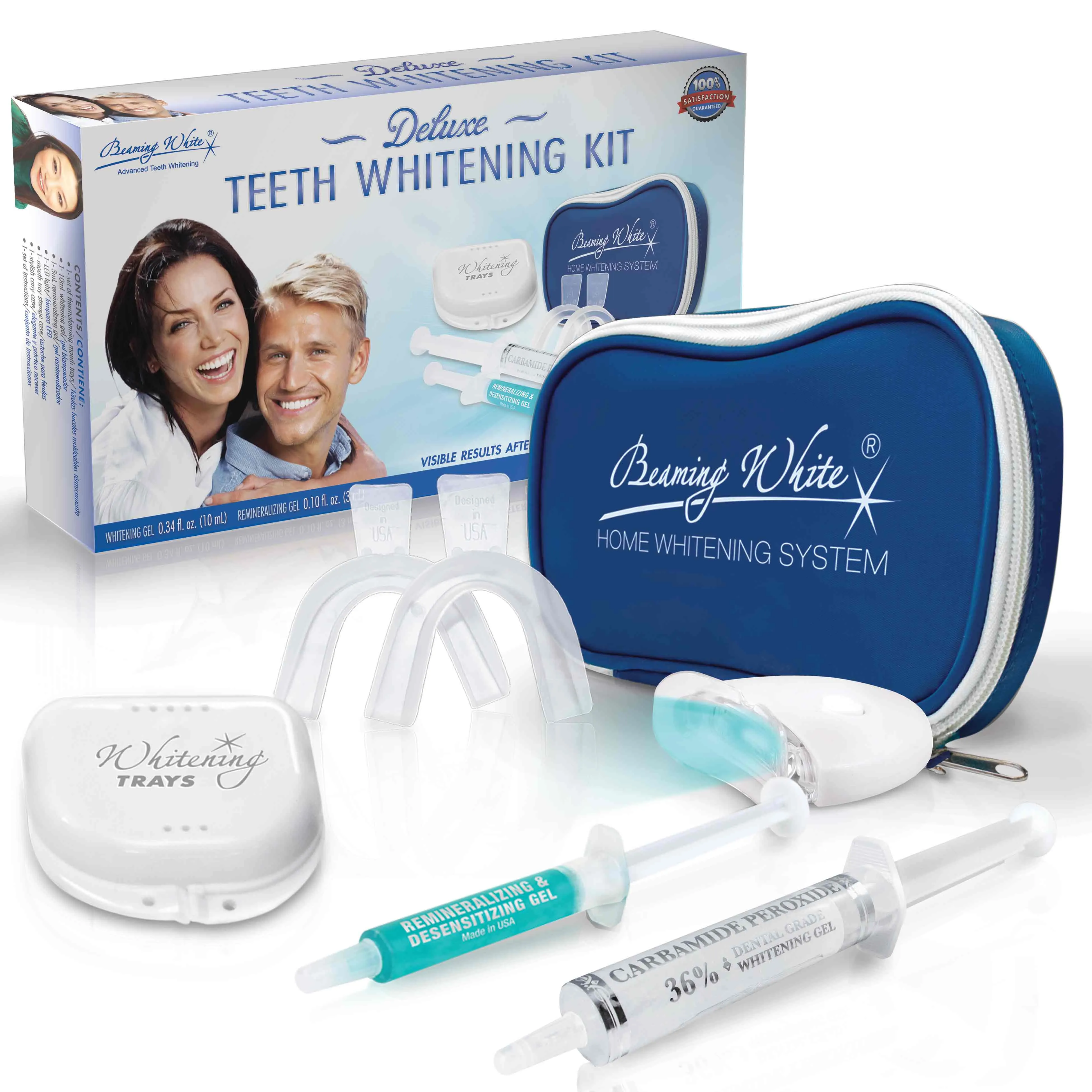
Maintaining your newly whitened smile requires a proactive approach. Regular dental check-ups and cleanings are essential to remove any surface stains and ensure your teeth remain healthy. Avoiding foods and drinks that stain, such as coffee, tea, red wine, and dark-colored berries, will help to prevent discoloration. If you do consume staining substances, rinsing your mouth with water or brushing your teeth soon afterward can minimize their impact. Consider using a whitening toothpaste or mouthwash, as these can help remove surface stains. If you notice any staining, you may need touch-up treatments, which can be discussed with your dentist. By adhering to these maintenance tips, you can prolong the longevity of your results and enjoy a radiant smile for years to come.
Secret 5 Realistic Expectations
Setting realistic expectations is vital for a satisfying teeth whitening experience. Whitening kits can effectively lighten the shade of your teeth, but individual results vary. Factors such as the type of staining, the initial shade of your teeth, and your lifestyle habits will impact the final outcome. It’s important to understand that teeth whitening does not change the underlying structure of your teeth; it only addresses discoloration. Your dentist can help you determine what shade of white is achievable for you and manage your expectations accordingly. Be patient, as it typically takes several weeks to see the full effects of the treatment. Remember that touch-up treatments may be needed over time to maintain your desired shade. Focusing on the overall improvement of your smile, rather than achieving a flawless white, is essential for a positive and fulfilling experience. Realistic expectations promote patient satisfaction.
Advantages and Disadvantages of Home Whitening
Take-home whitening kits present a compelling option for improving your smile, offering several advantages over other methods. However, they also come with certain limitations. Understanding the pros and cons will help you determine if a home whitening kit is the right choice for you. This insight will allow you to make an informed decision about your oral care journey, improving your long term dental hygiene. Weighing these factors will ensure the most positive and satisfying experience with your teeth whitening. Consider all of the advantages and disadvantages, before deciding the proper route for you and your teeth.
Pros of Using Take Home Kits
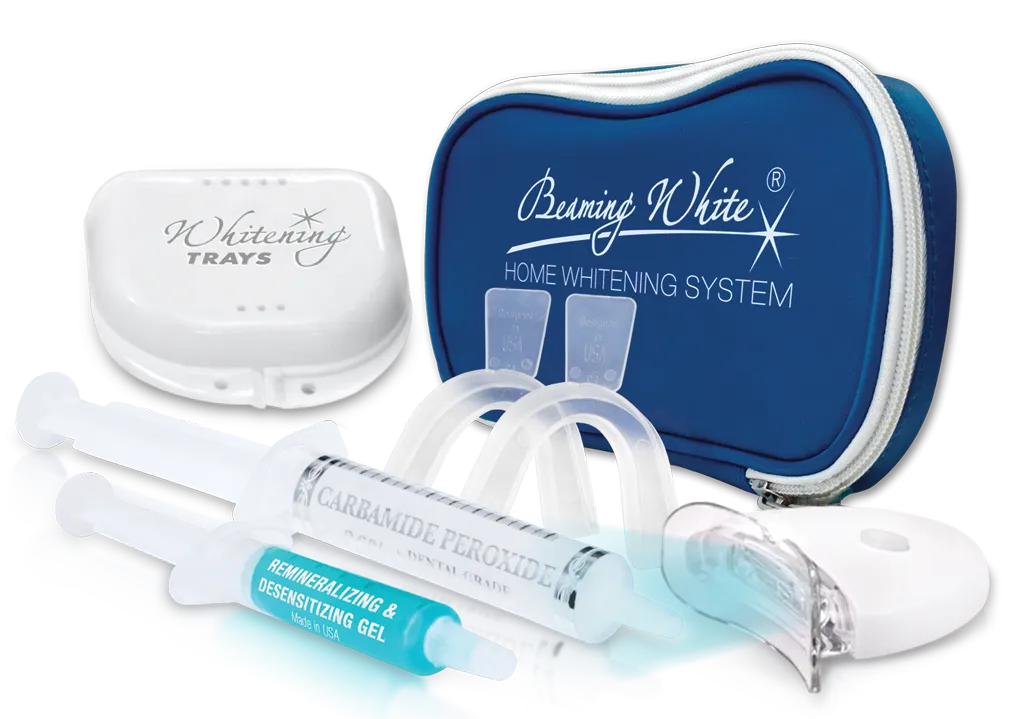
One of the primary advantages of take-home kits is their convenience. You can whiten your teeth in the comfort of your own home, fitting the treatment into your daily schedule. The cost is often more affordable compared to in-office whitening procedures, making it an accessible option for many. The custom-fitted trays, created by your dentist, ensure an effective and comfortable fit. The ability to control the process and adjust the treatment duration, based on your dentist’s recommendations, provides flexibility. These kits also allow for touch-up treatments to maintain your results over time. Many people find the convenience and affordability highly appealing, making them a very popular choice for improving their smiles and improving self confidence. The ease of use and high degree of control make this an outstanding option for most individuals.
Cons of Home Whitening
Despite the many benefits, take-home whitening kits have some potential downsides. The treatment can sometimes lead to tooth sensitivity or gum irritation, which can be uncomfortable. Achieving noticeable results can take several weeks of consistent use, so patience is required. Whitening kits are generally less effective on certain types of staining, such as tetracycline stains, compared to in-office procedures. There’s also a risk of uneven whitening if the trays don’t fit perfectly or if the application isn’t consistent. The effectiveness also depends on your diligence in following instructions and your ability to maintain your teeth after whitening. It’s very important to weigh these disadvantages against the advantages before making a decision about your teeth whitening journey.
Comparing Take Home Kits with Professional Whitening
When considering teeth whitening, you have options beyond take-home kits. Professional whitening procedures, performed by your dentist in the office, offer distinct advantages. Understanding the differences in cost, effectiveness, and long-term maintenance will help you make the best choice for your needs and budget. Deciding between these two methods depends on your priorities and what you want to achieve with your smile. Consulting with your dentist allows you to make a decision that you are confident in. Knowing how these options compare helps to maximize your chances of a positive and satisfying outcome. Remember to consider all factors involved and pick the best option for your unique needs.
Cost Differences

One of the most significant differences between take-home kits and professional whitening is the cost. Take-home kits are generally more affordable, offering a budget-friendly option for those looking to brighten their smiles. The cost of in-office whitening is typically higher, as it involves the dentist’s expertise, specialized equipment, and more potent whitening agents. However, the price can vary depending on the dentist, the specific procedure, and the location. The choice between the two depends on your financial considerations. Sometimes dentists have payment plans. Be sure to understand the cost, and what is included, before deciding what is best for you. Determine your budget before talking with your dentist, as this will help guide the choice for your smile enhancement journey.
Effectiveness Comparison
Professional whitening procedures often provide faster and more dramatic results. The stronger whitening agents used in-office, along with the dentist’s control over the process, can achieve a significant change in the shade of your teeth in a single visit. Take-home kits, while effective, typically require several weeks of consistent use to achieve similar results. The level of effectiveness also depends on the type of staining and the individual’s teeth. Professional whitening can also be better suited for certain types of stains, such as those caused by tetracycline. Your dentist can assess the nature of your stains and recommend the most suitable treatment option. The effectiveness of both options depends on your commitment to following the instructions and maintaining good oral hygiene.
Maintenance and Long Term Results
Both take-home kits and professional whitening require maintenance to sustain the results. The longevity of your whiter smile depends on your lifestyle, including your diet and oral hygiene habits. Avoiding staining foods and drinks and practicing regular brushing and flossing are critical. You might need occasional touch-up treatments, whether you choose take-home kits or in-office whitening. Your dentist may recommend using a whitening toothpaste or mouthwash to help maintain your results. With proper care, the effects of both whitening methods can last for months or even years. Regular dental checkups are important to monitor the condition of your teeth and provide any necessary maintenance or touch-up treatments.
Important Considerations and Safety Tips

Before starting any teeth whitening treatment, it’s crucial to understand the important considerations and safety tips. While take-home whitening kits are generally safe when used as directed, there are factors to be aware of. These considerations are critical to minimizing potential risks and ensuring a positive outcome. These include ensuring you are the right candidate and how to protect your teeth. It’s important to consult with your dentist before use. Doing so will provide you with the best chance of a safe and effective whitening journey, leaving you with a beautiful and healthy smile. Your dental health is important and it is crucial to follow the recommendations of your dentist.
Who Is a Good Candidate for Home Whitening
Not everyone is a good candidate for take-home whitening kits. People with healthy teeth and gums, without extensive dental work, are typically ideal candidates. Those with surface stains caused by food, drinks, or smoking often see the best results. Individuals with sensitive teeth or gum disease should consult their dentist before starting treatment. It is especially important to have a full dental check-up before beginning to ensure there are no underlying issues that need to be addressed. The dentist can assess your oral health and determine if home whitening is safe and effective for you. Understanding your candidacy and the potential impact on your specific dental health is essential for a successful outcome.
Potential Side Effects
While take-home whitening kits are generally safe, some potential side effects can occur. Tooth sensitivity is the most common. Gum irritation is another possibility, particularly if the whitening agent comes into contact with the gums. These side effects are usually temporary and can be managed with specific techniques. If you experience significant sensitivity or irritation, contact your dentist. They may suggest adjusting the treatment schedule, using a desensitizing toothpaste, or providing a fluoride treatment. Following the instructions and communicating with your dentist about any concerns are essential for minimizing any adverse effects. Being aware of the potential risks and how to manage them will help you have a more positive and comfortable experience.
Consulting with Your Dentist
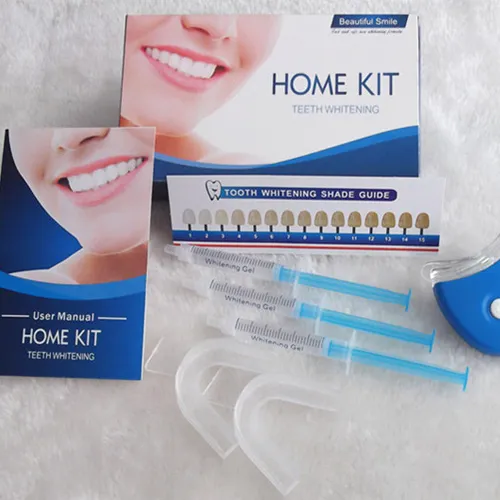
Consulting with your dentist is the most important step before starting a take-home whitening kit. Your dentist can assess your oral health, identify any underlying issues, and determine if whitening is safe and appropriate for you. They can also recommend the most suitable kit and concentration of whitening agent based on your needs. Your dentist will provide custom-fitted trays, ensuring the best fit and effectiveness. They can guide you on the proper application techniques, help you manage any side effects, and provide ongoing support. Consulting with your dentist is the best way to maximize the benefits of take-home whitening kits and minimize the risk of any potential complications, leaving you with a healthy and beautiful smile.
In conclusion, take-home whitening kits can be a convenient and effective way to brighten your smile. By understanding how they work, following the top secrets for success, and considering the advantages and disadvantages, you can make an informed decision about teeth whitening. Always consult with your dentist to ensure the treatment is right for you and to address any concerns. With the right approach, you can achieve a brighter, more confident smile.
